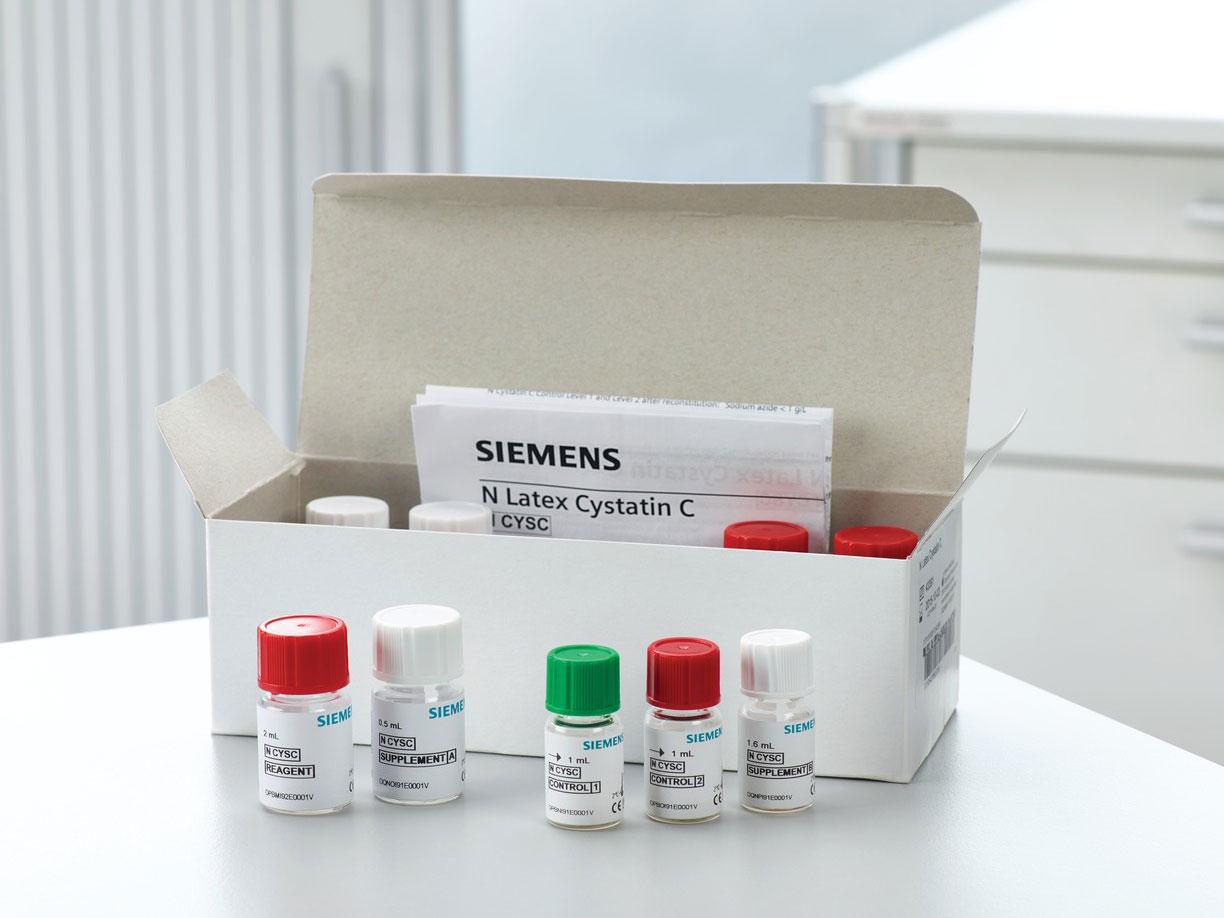Renal disease often progresses undetected, because kidney impairment does not cause pain. This is why chronic kidney disease is not diagnosed until patients show symptoms of an advanced stage of the disease. In the early stages of disease, laboratory testing is the most efficient and sensitive way to detect reduction in renal function.1
Cystatin C shows increased sensitivity to renal dysfunction compared to serum creatinine, especially in the early stage of kidney disease characterized by a mild reduction in glomerular filtration rate.
The N Latex Cystatin C Assay:
- Is suitable for both serum and plasma specimens
- Has low imprecision (total CV <5%)
- Runs on the Atellica® NEPH 630 System2, BN™ II System, and BN ProSpec® System
